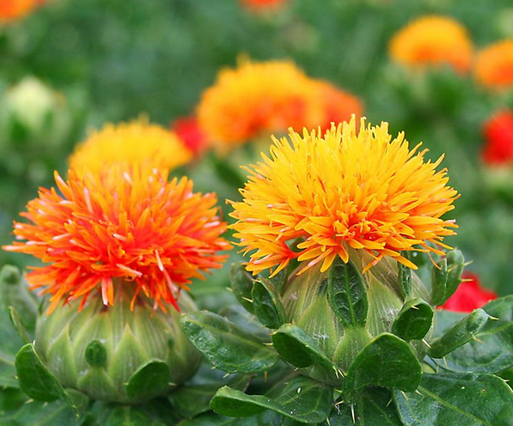INCI name: | Flos Carthami |
Part used: | Seeds |
Extraction method: | Cold pressing |
CAS No.: | 8001-23-8 |
Origin: | China |
Appearance : | Pale yellow clear oily liquid |
Odour: | Characteristics of safflower seed oil smell, and taste |
Relative Density(20℃): | 0.915~0.927 |
Refractive index(20℃): | 1.4670~1.4770 |
Acid value (mgKOH/g): | ≤1.0 |
Moisture and volatile matter (%): | ≤0.5 |
Soap change value: | 185~195 |
The main fatty acid composition (%): | Gamma linolenic acid (C18:3): 0.2 ~ 0.8 |
The oil acid (C18:2):76.0 ~ 83.0 | |
Oil acid (C18:1):8.0 ~ 30.0 |
Safflower (Carthamus tinctorius L.) is a highly branched, herbaceous, thistle-like annual plant. It is commercially cultivated forvegetable oil extracted from the seeds. Plants are 30 to 150 cm (12 to 59 in) tall with globular flower heads having yellow, orange, orred flowers. Each branch will usually have from one to five flower heads containing 15 to 20 seeds per head. Safflower is native to arid environments having seasonal rain. It grows a deep taproot which enables it to thrive in such environments. |  |